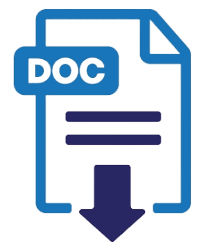FACTORS AFFECTING USE BEHAVIOR TO USE TRANSPORTATION SERVICES APPLICATIONS USING UNIFIED THEORY OF ACCEPTANCE AND USE OF TECHNOLOGY (UTAUT) 2 MODEL
Graduate Program, Information System Management Gunadarma University
Indonesia
Graduate Program, Information System Management Gunadarma University
Indonesia
Article Submitted: 04 February 2020
Article Published: 05 February 2020
Abstract
This research is motivated to analyze the technology acceptance of the Transportation Services Applications in Jabodetabek using Unified Theory of Acceptance and Use of Technology (UTAUT) 2 model. The purpose of this research is to determine the factors based on UTAUT 2 model for the use behavior to use the Transportation Services Applications in Jabodetabek and to test the UTAUT 2 model whether the model is suitable for this research to assess which factors that affect the use behavior of those applications or not. Population in this research is the people who live in Jabodetabek and the sample size is 238. The methodology used in this research consists of literature review and data analysis. The result shows that only four variable factors that affect the use behavior to use the Transportation Service Applications namely Habit, Social Influence, Price Value and Behavioral Intention. The analysis result shows that UTAUT 2 model is suitable and fits the empirical data of the research, it means that the use behavior of Transportation Services Applications can be explained by UTAUT 2 model.
Keywords
References
S. Kemp, “Half The World Now Has a Mobile Phone,” 2014. Available: http://wearesocial.sg/blog/2014/09/world-mobile-phone/. [Accessed: December 12, 2014].
S.J.Q. Min and G. Qu, “Mobile commerce user acceptance study in china: A revised utaut model,” Tsinghua Science & Technology, vol. 13, pp. 257–264, 2008.
V. Venkatesh and D. D. Fred, “A theoretical extension of the technology acceptance model: Four longitudinal field studies,” Management Science, pp. 186– 204, 2000.
S. Santoso, AMOS 22 Untuk Structural Equation Modeling. Jakarta: Penerbit PT Elex Media Komputindo, 2015.
A. Ferdinand, Structural Equation Modelling dalam Penelitian Manajemen. Semarang: Penerbit Universitas Diponegoro, 2002.
D. D. Fred, “Perceived usefulness, perceived ease of use, and user acceptance of information technology,” MIS Quarterly, pp. 319–340, 1989.
C.A.T. Ronald, C. A. and H. Jane, “Personal computing: Toward a conceptual model of utilization,” MIS Quaterly, pp.125–143, 1991.
G.C. Moore and Benbasat, “Development of an instrument to measure the perceptions of adopting an information technology innovation,” Information Systems Research, vol. 2, pp. 192–222, 1991.
T.R. Tyler, “Is the internet changing social life? it seems the more things change, the more they stay the same,” Journal of Social Issues, vol. 58, pp. 195–205, 2002.
M.P. Kumar, “Information technology: Roles, advantages and disadvantages,” International Journal of Advanced Research in Computer Science and Software Engineering, vol. 4, pp. 1020–1024, 2014.
C. Liu, “Worldwide internet and mobile users: Emarketer updated estimates for 2015,” Technical report,” eMarketer, 2015.
P. A. Auliani, “Mau tahu hasil riset google soal penggunaan smartphone di indonesia?” 2015. Available: http://tekno.kompas.com/read/2015/11/19/23084827. [Accessed: July 1, 2016].
N.A. Ngazis and M. Angelia, “Survei: Gojek ungguli grab,” 2016. Available: http://teknologi.news.viva.co.id/news/read/748464-survei-gojekungguli-grab.[Accessed: July1, 2016].
G.C. Moore and I. Benbasat, “Integrating diffusion of innovations and theory of reasoned action models to predict utilization of information technology by end-users,” Diffusion and Adoption on Information Technology, K. Kautz and J. Pries Hege(eds,) Chapman and Hall, London, pp. 132–146, 1996.
I. Ajzen, I, “The theory of planned behavior,” Organizational Behavior and Human Decision Processes 50, pp. 179–211, 1991.
PWC. Millennials at Work, Reshaping the Workplace. 2011.
Deloitte, “Short messaging services versus instant messaging: Value versus volume,” Technical report, Deloitte, 2014.
S. Kemp, “Digital in 2016,” Technical report, We Are Social. Internet: http://wearesocial.com/sg/special-reports/digital-2016, 2016.
H. C. C H. Kim and S. Gupta, S, “Value-based adoption of mobile internet: An empirical investigation,” Mobile Commerce: Strategies, Technologies, and Applications, pp. 111–126, 2007.
I. Ajzen, “Residual effects of past on later behavior: Habituation and reasoned action perspectives,” Personality and Social Psychology Review, pp. 107–122, 2002.
B. D. T. Craren and J. Sviokla, “Citied of Opportunities 6: We the Urban People,” PWC, 2014.
J.Y.L.T.V. Venkatesh and X. Xu, X, “Consumer acceptance and use of information technology: Extending the unified theory of acceptance and use of technology,” MIS Quarterly, vol. 36, pp. 157–178, 2012.
Hair, Multivariate Data Analysis. Six Edition. New Jersey: Pearson Educational, Inc, 2006.
V. Visnawath, G.B.D.M.G. Morris, and F.D. Davis, “User acceptance of information technology: Toward a unified view,” MIS Quarterly, vol. 27, pp. 425–478, 2003.

